rhythm
Bit.Trip Runner
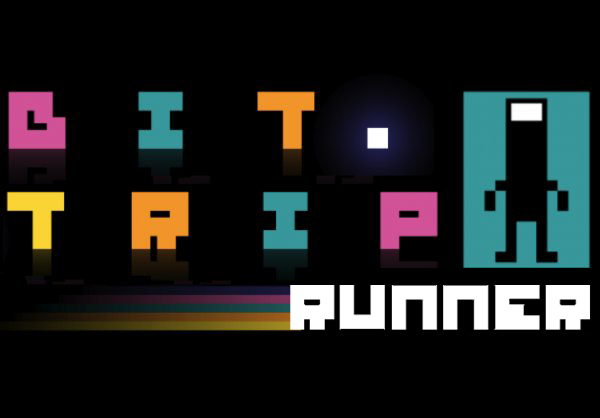 VVVVVV and NightSky both featured great musical soundtracks to back their platforming efforts, but Bit.Trip Runner is essentially a rhythm game with the platforms serving the soundtrack. Developed by Gaijin Games and released on WiiWare in 2010 and Windows in 2011, Bit.Trip Runner attempts to marry the sounds of Guitar Hero and the auto-running of Canabalt.
VVVVVV and NightSky both featured great musical soundtracks to back their platforming efforts, but Bit.Trip Runner is essentially a rhythm game with the platforms serving the soundtrack. Developed by Gaijin Games and released on WiiWare in 2010 and Windows in 2011, Bit.Trip Runner attempts to marry the sounds of Guitar Hero and the auto-running of Canabalt.
Nate originally reviewed Bit.Trip Runner last year and deemed it the “anti-rhythm game”, he awarded it an average score and went on to call it stressful. Steve chimed in in the comments section a few months ago and agreed with Nate’s assessment, but for whatever reason, I decided to play it myself.
I didn’t actually beat Bit.Trip Runner, but I made it to the third to last level before finally giving up, so I feel like writing a “full” review is still legitimate, either way, full disclosure.
Rhythm Heaven Fever
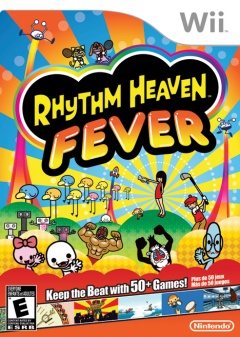 Rhythm Heaven Fever is a procession of adorable cartoon situations. A boy kicks away stray footballs that threaten to ruin his date. A quartet of baby seals tilt back-and-forth in marching-style unison. A tiny monkey taps a tambourine, its big brown eyes gleaming with joy as you repeat its patterns. The game's energetic sweetness is the antithesis of this console generation's characteristic gravelly machismo and brooding drama. It's pure joy.
Rhythm Heaven Fever is a procession of adorable cartoon situations. A boy kicks away stray footballs that threaten to ruin his date. A quartet of baby seals tilt back-and-forth in marching-style unison. A tiny monkey taps a tambourine, its big brown eyes gleaming with joy as you repeat its patterns. The game's energetic sweetness is the antithesis of this console generation's characteristic gravelly machismo and brooding drama. It's pure joy.
And yet, it wracks my nerves like a Counter-Strike match. My palms sweat as I constrict the Wii remote in a boa's death grip. My heart races before I even select a song. Like a tiger crouched in the brush, I await the right moment to strike each note with parched eyes. Even with the peppy rhythms as a constant guide, relaxation is a shortcut to failure.
You can't get careless because the game demands total precision. Guitar Hero understands that you have five frets to manage and cuts you some slack if you're a split-second early on the downbeat. Rhythm Heaven Fever scrutinizes to your timing to the millisecond: near the end of the following video, the song approaches 180 beats per minute and splits each beat into 23 blocks; I am tasked with hitting only the center column. There is no room for error.
The smiles and rainbows are a front, as the cute chimps and happy cheerleaders of Rhythm Heaven Fever know exactly how well your internal metronome is running. And they are judging you. Harshly.
Rhythm Heaven Fever [Video]
 It irks me that so many gamers believe the only worthwhile rhythm games are played with guitar peripherals. I love a good Rock Band party as much as the next Keith Moon wannabe, but there are too many wonderful music-based experiments in puzzle games and platformers and RPGs and shooters to cloister yourself in a pile of plastic instruments.
It irks me that so many gamers believe the only worthwhile rhythm games are played with guitar peripherals. I love a good Rock Band party as much as the next Keith Moon wannabe, but there are too many wonderful music-based experiments in puzzle games and platformers and RPGs and shooters to cloister yourself in a pile of plastic instruments.
One such experiment was Rhythm Heaven, a strange blend of WarioWare and J-Pop that was one of my favorite Nintendo DS experiences. It didn't have a double platinum soundtrack or intense finger dexterity challenges, but the bubblegum ditties and cute-wacky scenarios got my head bobbing and my hummer humming as few games can.
Fortunately, Rhythm Heaven found enough of a worldwide fanbase to justify the next release, Rhythm Heaven Fever for the Wii. It trades the touch-screen taps and slides for a traditional two button setup, but the bright cartoon eye candy looks even sharper this time around. Budget priced at $30, Rhythm Heaven Fever could be worth a look if you didn't bury your Wii after Skyward Sword.
Bit.Trip Runner
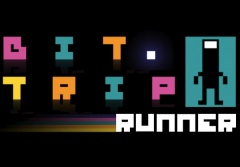 The era of digital distribution has been good to many smaller
developers. One needs to look no further than the Minecraft success story to see
just how fruitful the budget game market can be.
The era of digital distribution has been good to many smaller
developers. One needs to look no further than the Minecraft success story to see
just how fruitful the budget game market can be.
Even on Nintendo's meager WiiWare service, some have found the opportunity to shine. Gaijin Games, a small studio founded by a former LucasArts employee, has found acclaim with its Bit.Trip series. With six games in the series released within two years, each Bit.Trip title is built on the same foundation of rhythm and psychedelic retro aesthetics but offers a different gameplay hook. Beat, the first title, is like the love child of Pong and a laser show. Core is more like a tricky Guitar Hero with a D-pad. Void is an avoid-and-collect using the nunchuk's control stick. Fate is a rail shooter utilizing the Wii remote's pointer. And Flux, the final chapter in the Bit.Trip saga, returns to an experience similar to the choreographed Pong performance that birthed the series in Beat.
I recently acquired Bit.Trip Runner, the fourth game released (and the third I've played, after Void and Beat). It happens to be the one that generates the most buzz in the gaming community. Runner certainly sounded appealing to me when I was introduced to it as a "rhythm-based platformer." My experience with the game, however, came somewhat short of my high hopes.
Dance Central
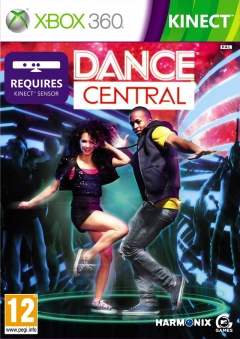 The PlayStation Move’s release came and went without a single person I know picking a package up. Kinect was released, and again, nobody I know actually bought one. Well, except for one of my coworkers, who excitedly picked it up on launch weekend and then held a LAN party this last weekend. The two events are completely independent of each other, however. His friends at the LAN party were more interested in playing Warzone 2100 and setting up E.V.E. servers than moving their bodies in the living room, but knowing he owned a Kinect actually got me really excited.
The PlayStation Move’s release came and went without a single person I know picking a package up. Kinect was released, and again, nobody I know actually bought one. Well, except for one of my coworkers, who excitedly picked it up on launch weekend and then held a LAN party this last weekend. The two events are completely independent of each other, however. His friends at the LAN party were more interested in playing Warzone 2100 and setting up E.V.E. servers than moving their bodies in the living room, but knowing he owned a Kinect actually got me really excited.
Kinect isn’t something I actually want, or it wasn’t, at least. I like lounging about when playing games and the thought of relaxing after a day of work by running and jumping around sounds awful. But from the moment I saw Harmonix’s Dance Central back at E3, I’ll admit I was curious. As the games of Red Alert 3 broke up, I wandered upstairs with a few other guys to try out Kinect. They immediately popped in Kinect Sports, which turned out exactly as I had expected: a ripoff of Wii Sports, Wii Play, and Wii Sports Resort. Not that this was a bad thing, and while some of the mini-games were pretty fun, the whole experience just screamed “gimmicky!”
And then we put in Dance Central, and everything changed. Harmonix is the best music game developer out there, so I had confidence that if anyone could pull off a dancing game, it would be them. This is not a traditional first hour review with minute-by-minute updates, but I hope you still find it informative and entertaining.
LEGO Rock Band DS
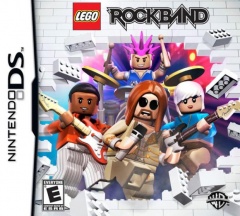 Rock Band 3 is due out very soon and I just read that there will be a Nintendo DS port of the game. Unlike Guitar Hero: On Tour, there will be no bonus peripherals used to control the game, just the regular buttons. If this sounds odd to you, well, the experience is already available! Harkening all the way back to Harmonix's first game, Frequency, released in 2001.
Rock Band 3 is due out very soon and I just read that there will be a Nintendo DS port of the game. Unlike Guitar Hero: On Tour, there will be no bonus peripherals used to control the game, just the regular buttons. If this sounds odd to you, well, the experience is already available! Harkening all the way back to Harmonix's first game, Frequency, released in 2001.
After Frequency and Ampltude grew a cult following, the rhythm music game world exploded with Guitar Hero and Rock Band. No more would we press mere buttons on a controller, but now we will press buttons on a plastic guitar (not hating, I love the Rock Band series)! I thought we would never see the classic button pressing gameplay ever again, but gaming history likes to repeat itself, and I recently discovered that Harmonix has brought it back with Rock Band: Unplugged and LEGO Rock Band DS.
Seeing as I don't own a PSP, I sat down to the odd combination of LEGO and Rock Band. Released about a year ago alongside its PS3/Wii/Xbox 360 big brothers, the DS version was hampered with a smaller soundtrack and no downloadable content, but it is available on the go. And of course, if you're a fan of Frequency and Amplitude, then it might be time to return home.
LEGO Rock Band DS is the longtime sequel I've been waiting for
 No, I'm not really excited that it's another Rock Band game or even yet another LEGO game, but that LEGO Rock Band DS is essentially the direct sequel to Harmonix's original rhythm games: Frequency and Amplitude. For the unfamiliar, Harmonix's first two games were essentially the precursor to Rock Band where you played multiple instruments, but the catch was you had to flip between instruments after successfully playing a few measures of another. The gameplay was quite a bit more complex than Harmonix's original Guitar Hero games as there were multiple sets of scrolling notes that you had to keep an eye on to efficiently keep your streak going.
No, I'm not really excited that it's another Rock Band game or even yet another LEGO game, but that LEGO Rock Band DS is essentially the direct sequel to Harmonix's original rhythm games: Frequency and Amplitude. For the unfamiliar, Harmonix's first two games were essentially the precursor to Rock Band where you played multiple instruments, but the catch was you had to flip between instruments after successfully playing a few measures of another. The gameplay was quite a bit more complex than Harmonix's original Guitar Hero games as there were multiple sets of scrolling notes that you had to keep an eye on to efficiently keep your streak going.
Child of Eden Preview
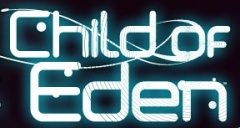 It should be little surprise for anyone
who knows me that my most exciting development from E3 was the unveiling of Child of
Eden. Kept hidden for two years in development, Tetsuya Mizuguchi, Q?
Entertainment and Ubisoft
(with a little help from Joel McHale) announced the title to the world to start off
the Ubi conference. Mizuguchi took the lead,
presenting a
demo level paired with the 360's Kinect motion capture
system.
While most detailed information on the title is still sparse and hard to find,
bits and pieces of information are beginning to sift around, most of which sound quite promising. Here is what we know so
far...
It should be little surprise for anyone
who knows me that my most exciting development from E3 was the unveiling of Child of
Eden. Kept hidden for two years in development, Tetsuya Mizuguchi, Q?
Entertainment and Ubisoft
(with a little help from Joel McHale) announced the title to the world to start off
the Ubi conference. Mizuguchi took the lead,
presenting a
demo level paired with the 360's Kinect motion capture
system.
While most detailed information on the title is still sparse and hard to find,
bits and pieces of information are beginning to sift around, most of which sound quite promising. Here is what we know so
far...
